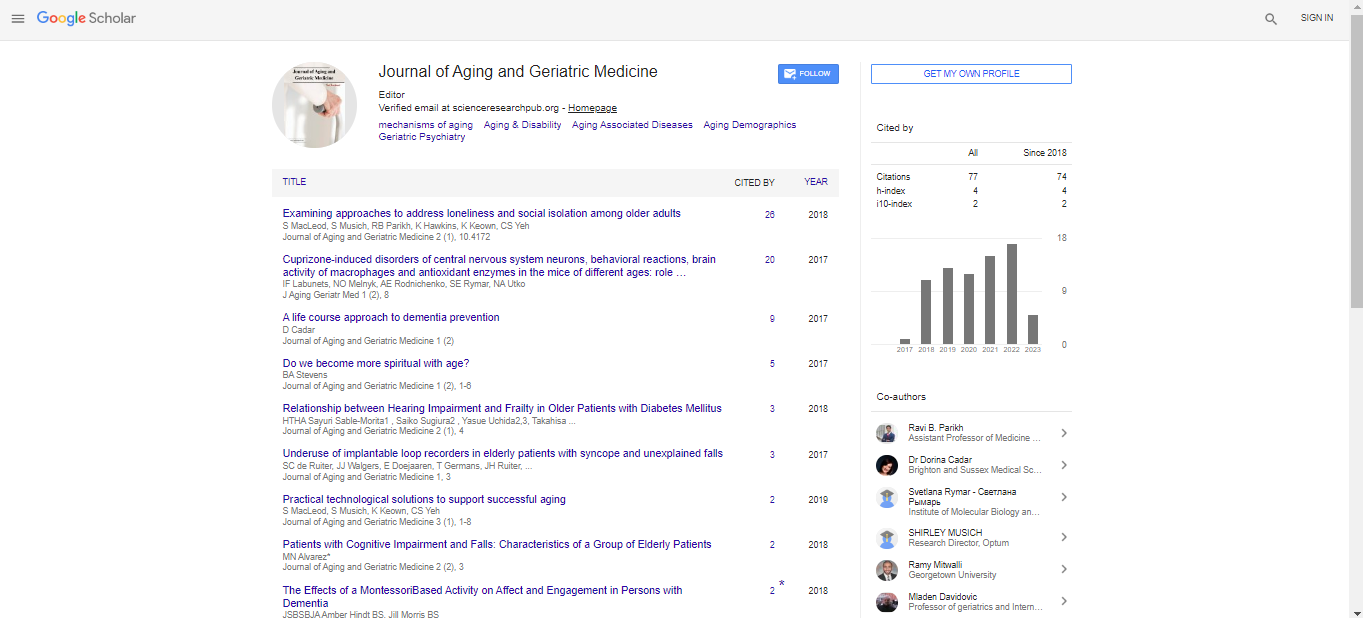Role of Laparoscopy in Diagnosing and Treating Acute Nonspecific Abdominal Pain
Barza Afzal
Services Hospital Lahore, Lahore, Pakistan
: J Aging Geriatr Med
Abstract
Background: Nonspecific abdominal pain (NSAP) is a pain for which no immediate cause is evident on acute admission and does not necessitate emergency surgical intervention. NSAP is a frequent reason for presentation in the emergency department (ED). Laparoscopy is a well-established technique that allows a surgeon to visualize the abdominal cavity after insufflation through a few small incision ports. Despite the increasing availability of laparoscopic investigation, the availability of a laparoscope in the ED settings in Pakistan is low due to the expense and maintenance needs of the system. Objective: This study aimed to evaluate the role of laparoscopy in diagnosing the cause of acute NSAP and its role in treating the pathology of disease in patients presenting to the emergency department (ED) of Services Hospital, which is a government sector hospital in Lahore, Pakistan. Materials and methods: This study was conducted in Services Hospital Lahore, Pakistan, from January 1, 2016 to December 31, 2019. The study included patients aged 12 to 70 years of either sex who presented to the ED with abdominal pain for whom no diagnosis could be achieved on clinical assessment, laboratory findings, and radiological findings (x-ray abdomen, ultrasonography, and computed tomography scan). All study participants underwent diagnostic laparoscopy under general anesthesia. Patients were monitored weekly via follow-up postoperatively for the first month and then monthly for 12 months. All study data were recorded on a predesigned proforma. The data were analyzed using IBM Corp. Released 2012. IBM SPSS Statistics for Windows, Version 21.0. Armonk, NY: IBM Corp. Results: A total of 122 patients diagnosed with acute NSAP were enrolled in our study (mean age, 46.4 ± 20.3 years). The study population consisted of 52 male patients (42.6%) and 70 female patients (57.4%). Our study participants had a mean body mass index of 24.2 ± 3.3 kg/m2. The most common ED presentation was lower abdominal pain. One hundred sixteen patients (95.1%) had positive findings on laparoscopy, while six patients (4.9%) had no identified pathology on laparoscopy. The most frequent pathology was appendicular in origin, followed by pelvic inflammatory disease. Surgical management of patients through laparoscopy was performed in 97 patients (79.5%). Conversion to laparotomy was done in 12 patients (9.8%). Definite diagnosis was established in 118 patients (96.7%). Port site infection occurred in four patients (3.3%), chest infection in five patients (4.1%), deep venous thrombosis in one patient (0.8%), and anastomotic leakage in one (0.8%) patient. Four patients (3.3%) developed recurrence of symptoms. Conclusions: This study explored the role of laparoscopy in diagnosing and treating patients presenting to the ED with acute NSAP. According to our results, laparoscopy is a safe and effective method for diagnosing and treating acute NSAP with low postoperative morbidity and potentially decreased risk of postoperative complications. Physicians should consider laparoscopy as a first-line invasive investigation for patients presenting with undiagnosed acute abdominal pain.
 Spanish
Spanish  Chinese
Chinese  Russian
Russian  German
German  French
French  Japanese
Japanese  Portuguese
Portuguese  Hindi
Hindi 